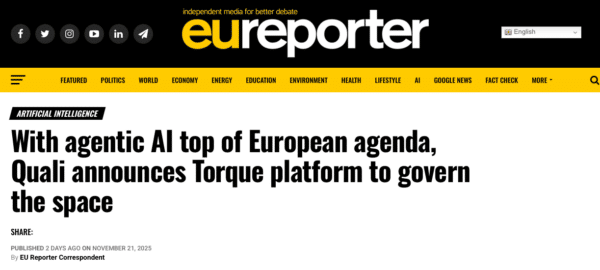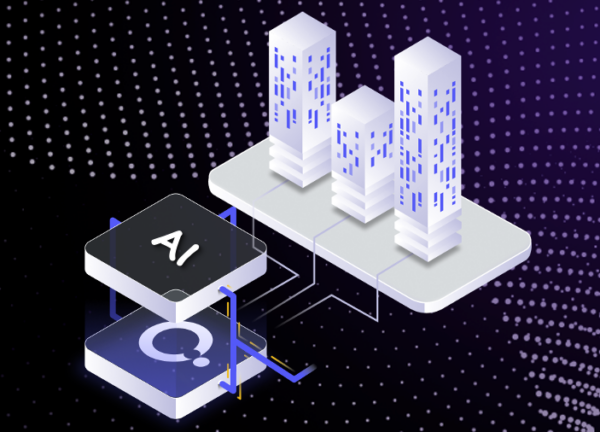Description
Container Management in a Hybrid, Heterogeneous, and AI-Driven World
Overview
Containers, once celebrated for their packaging efficiency and DevOps agility, have evolved into critical infrastructure components for cloud-native, hybrid, and AI-driven environments. Yet most tooling remains stuck in first-wave paradigms: orchestration over optimization, deployment over governance, and silos over integration.
As enterprises move toward hybrid, multi-cloud, and AI-native infrastructure, they need platforms that go beyond scheduling workloads, they need systems that treat containers as programmable, policy-aware, and intelligence-integrated infrastructure units.
This report defines the critical capabilities required to manage containers in a world of AI agents, ephemeral services, GPU-intensive applications, and cross-cloud complexity. It also evaluates how traditional Kubernetes-focused platforms fall short, and how modern, intelligent automation platforms are redefining the category by embedding intelligence, governance, and orchestration natively across the container lifecycle.
Key Findings (Observations)
- Kubernetes ≠ Container Strategy:Kubernetes excels at orchestration but assumes developers will manage policy, compliance, and resource control separately.
- AI-Driven Workloads Expose Gaps:Managing GPU scheduling, dynamic scaling, and intelligent workload placement is outside the scope of most container platforms.
- Runtime Governance is Missing:Container drift, cost sprawl, and rogue deployments continue because few platforms embed policy-as-code at runtime.
- Integration Determines Usability:Developer and platform engineering adoption depends on seamless integration into CI/CD, GitOps, and internal platforms, not just cluster control.
- Container-Only Platforms Hit a Wall: Many container only platforms excel Kubernetes abstraction but offer minimal intelligence, governance, or broader infrastructure orchestration. The results in well-managed containers totally disconnected from business value.
Recommendations
- Move Beyond Orchestration: Treat containers as programmable, intelligent infrastructure, not just workloads to be scheduled.
- Unify Policy with Execution: Embed cost, compliance, and performance guardrails directly into container lifecycle orchestration.
- Embrace GPU-Native Intelligence: AI workloads demand dynamic resource awareness, not static cluster allocation.
- Standardize Through Blueprints: Convert containerized environments into governed, reusable blueprints that integrate across hybrid infrastructure.
- Converge on Intelligent Platforms: Evaluate Infrastructure Platforms for Engineering platforms that treat containers as part of broader infrastructure, not niche islands
Critical Capabilities for Container Management
- Container Blueprinting
Standardized, reusable templates for containerized environments across hybrid and multi-cloud. - Runtime Policy-as-Code Enforcement
Govern container usage (cost, compliance, resource) at runtime, not just at deployment. - AI-Workload Readiness (GPU-Aware Orchestration)
Support dynamic placement, scaling, and optimization of GPU-intensive workloads within containers. - Hybrid Cluster Integration
Operate seamlessly across cloud-native, on-prem, edge, and hybrid Kubernetes clusters. - Self-Service Enablement
Provide developers and platform teams intuitive access to governed container environments. - Cross-Tool Compatibility
Integrate with Terraform, Helm, ArgoCD, GitOps flows, and CI/CD platforms without lock-in. - Lifecycle Drift Detection & Remediation
Continuously monitor and auto-correct divergence in container environments. - Security & Compliance Controls
Enforce compliance and security guardrails dynamically across the container lifecycle. - Visibility & Cost Optimization
Expose container-level cost, usage, and performance metrics with policy-driven automation. - Intelligent Placement & Scheduling
AI-assisted recommendations and automated placement based on workload behavior and resource constraints.
Capability Comparison Across Tool Categories
How to Interpret Capability Scores The following capability scores use a 1–5 qualitative scale to reflect maturity and fit for dynamic, AI-infused infrastructure. These are directional, not absolute, based on support for real-time cost control, contextual attribution, and autonomous optimization.
1 = Rudimentary or Absent Capability: Basic or nonexistent support; requires heavy customization.
2 = Emerging / Partial: Limited capability or context-specific use cases.
3 = Functional: Reasonable support, but lacking real-time or AI-aware depth.
4 = Advanced: Solid functionality; handles most modern container management scenarios.
5 = Purpose-Built / Best-in-Class: Native support for modern workloads; real-time, contextual, and autonomous.
| Capability | Kubernetes Distros | CMPs | Container Ops Vendors | IPEs |
| Container Blueprinting | 2 | 3 | 3 | 5 |
| Runtime Policy Enforcement | 1 | 3 | 2 | 5 |
| AI-Workload / GPU-Awareness | 1 | 2 | 2 | 5 |
| Hybrid Cluster Integration | 3 | 3 | 4 | 5 |
| Self-Service Enablement | 2 | 3 | 4 | 5 |
| Cross-Tool Compatibility | 3 | 2 | 3 | 5 |
| Drift Detection & Remediation | 1 | 2 | 3 | 5 |
| Security & Compliance Controls | 2 | 3 | 3 | 5 |
| Visibility & Cost Optimization | 2 | 4 | 3 | 5 |
| Intelligent Scheduling & Placement | 1 | 2 | 2 | 5 |
Comparative Analysis of Tool Categories
Kubernetes Distros (e.g., EKS, AKS, GKE): Offer orchestration but minimal policy, governance, or AI awareness. Best suited as a substrate, not a full solution.
Cloud Management Platforms (e.g., Morpheus, CloudBolt): Provide abstraction layers, but slow to adapt to AI/container nuances. Often UI-heavy, brittle, and governance-centric.
Container Operations Platforms (e.g., Rafay, Mirantis, D2iQ): Strong in Kubernetes management, but weak in AI workload intelligence, runtime governance, or cost control. Containers are scheduled efficiently, but not governed intelligently.
Infrastructure Platforms for Engineering (e.g., Torque): Purpose-built for hybrid, AI-integrated environments. Turn containerized workloads into intelligent, policy-governed infrastructure. Torque unifies orchestration, compliance, self-service, and cost governance across heterogeneous environments.
The Role of Torque
Torque reframes container management as intelligent infrastructure orchestration. It treats containers not as standalone workloads, but as programmable units governed by policy and optimized for business value.
Torque enables:
- Self-service container blueprints for developers
- Runtime policy enforcement across cost, compliance, security
- GPU-aware orchestration for AI workloads
- Cross-cloud, hybrid Kubernetes cluster support
- Dynamic drift correction and lifecycle governance
While others manage clusters, Torque manages outcomes. In an AI-driven, hybrid world, containers aren’t the end, they’re the foundation. Torque ensures that foundation is intelligent, secure, and business-aligned.
Evaluation
Critical Capabilities for Container Management
Introduction: How to Use This Framework
Containerized workloads underpin modern enterprise applications, spanning cloud-native services, AI pipelines, edge computing, and hybrid deployments. But managing containers goes beyond Kubernetes orchestration, it requires runtime governance, workload-aware optimization, cost controls, and seamless self-service enablement.
This evaluation framework enables enterprises to:
- Identify maturity gaps in container lifecycle management.
- Assess readiness for hybrid, AI-native infrastructure.
- Understand the business value tied to modern container operations.
- Prioritize investments in container-aware infrastructure platforms.
Each capability includes a description, measurement criteria, business value, and a 1–5 maturity scale.
Critical Capabilities for Container Management
Container Blueprinting
- Description: Reusable, governed templates for containerized environments across hybrid/multi-cloud.
- Measurement Criteria: Are environments manually configured, partially templated, or fully standardized?
- Business Value: Accelerates delivery, reduces variance, enforces policy.
Evaluation:
☐ 1 – None
☐ 2 – Manual environment setup
☐ 3 – Partial templating
☐ 4 – Reusable templates for key workloads
☐ 5 – Enterprise-wide governed blueprints
Runtime Policy-as-Code Enforcement
- Description: Automated runtime governance for access, cost, compliance, and performance.
- Measurement Criteria: Are policies manual, reactive, or enforced dynamically?
- Business Value: Prevents cost overrun, enforces compliance, reduces operational risk.
Evaluation:
☐ 1 – None
☐ 2 – Manual controls
☐ 3 – Detection only
☐ 4 – Runtime enforcement for some workloads
☐ 5 – Continuous enterprise-wide policy enforcement
AI-Workload / GPU-Aware Orchestration
- Description: Intelligent placement and scheduling of AI workloads based on GPU availability and model phase.
- Measurement Criteria: Are workloads placed manually or with context-aware optimization?
- Business Value: Maximizes GPU utilization, accelerates training/inference, reduces idle spend.
Evaluation:
☐ 1 – None
☐ 2 – Manual allocation
☐ 3 – Scripted matching
☐ 4 – Automated scheduling
☐ 5 – AI-aware, policy-driven orchestration
Hybrid Cluster Integration
- Description: Seamless management across cloud-native, on-prem, and edge K8s clusters.
- Measurement Criteria: Is hybrid operation ad hoc, centrally managed, or policy-integrated?
- Business Value: Improves portability, standardization, and infrastructure control.
Evaluation:
☐ 1 – Single cluster only
☐ 2 – Manual multi-cluster config
☐ 3 – Centralized management, no governance
☐ 4 – Multi-cluster with limited policy
☐ 5 – Unified hybrid/multi-cloud governance
Self-Service Enablement
- Description: Developer-accessible catalogs of secure, compliant container environments.
- Measurement Criteria: Is access ticket-based, UI-bound, or role-governed self-service?
- Business Value: Accelerates innovation, reduces friction between developers and ops.
Evaluation:
☐ 1 – Ticket-based access
☐ 2 – Script-driven setup
☐ 3 – Limited UI tools
☐ 4 – Scoped, role-based catalogs
☐ 5 – Enterprise-wide, governed self-service
Cross-Tool Compatibility
- Description: Open integration with Terraform, Helm, GitOps, CI/CD, and monitoring platforms.
- Measurement Criteria: Is the platform extensible or proprietary?
- Business Value: Prevents lock-in, enables automation, improves adoption.
Evaluation:
☐ 1 – Proprietary tooling only
☐ 2 – Manual API usage
☐ 3 – Partial integration
☐ 4 – Standard tool compatibility
☐ 5 – Fully open, extensible ecosystem
Drift Detection & Remediation
- Description: Continuous identification and resolution of environment divergence.
- Measurement Criteria: Is drift handled reactively or proactively with automation?
- Business Value: Reduces instability, ensures auditability and compliance.
Evaluation:
☐ 1 – None
☐ 2 – Manual reviews
☐ 3 – Alert-only detection
☐ 4 – Detection with partial remediation
☐ 5 – Real-time drift correction with automation
Security & Compliance Controls
- Description: Enforce runtime guardrails (IAM, RBAC, time limits, tagging, secrets).
- Measurement Criteria: Are controls applied at design-time only, or enforced continuously?
- Business Value: Reduces data exposure, speeds audit readiness, protects sensitive workloads.
Evaluation:
☐ 1 – None
☐ 2 – Manual scripts
☐ 3 – Detection only
☐ 4 – Partial runtime enforcement
☐ 5 – Full lifecycle policy-as-code enforcement
Visibility & Cost Optimization
- Description: Real-time tracking of cost, usage, and performance metrics per container environment.
- Measurement Criteria: Is usage data collected passively or used for active optimization?
- Business Value: Improves ROI, prevents waste, enables budgeting alignment.
Evaluation:
☐ 1 – No visibility
☐ 2 – Manual reporting
☐ 3 – Basic dashboards
☐ 4 – Real-time alerts
☐ 5 – Automated cost control and shutdown of idle containers
Intelligent Placement & Scheduling
- Description: Automated placement of containers based on workload priority, cost, and constraints.
- Measurement Criteria: Are deployments static, or informed by real-time intelligence?
- Business Value: Improves efficiency, accelerates delivery, prevents resource contention.
Evaluation:
☐ 1 – Static deployments
☐ 2 – Manual tuning
☐ 3 – Rule-based logic
☐ 4 – Resource-aware scheduling
☐ 5 – AI/ML-informed placement decisions
Summary: How to Evaluate Overall Capabilities
- Score Each Capability (1–5):Use the checkboxes to assess maturity.
- Calculate the Average:Sum all ten scores and divide by ten.
- 1–2 = Reactive: Fragmented, ticket-based, risk-prone
- 3 = Transitional: Some automation, limited governance
- 4 = Advanced: Integrated, policy-driven, environment-aware
- 5 = Intelligent: Continuous orchestration, self-service, AI-optimized
- Prioritize Gaps:Focus on areas like AI-awareness, cost optimization, or drift control to reduce risk and unlock agility.
- Strategic Goal:Reach maturity levels of 4–5 across all capabilities to operate containers as intelligent infrastructure, not just workloads to be scheduled.
Quick Capability Assessment Worksheet
| Capability | Score (1–5) | Notes / Gaps Identified |
| Container Blueprinting | ||
| Runtime Policy-as-Code Enforcement | ||
| AI-Workload / GPU-Aware Orchestration | ||
| Hybrid Cluster Integration | ||
| Self-Service Enablement | ||
| Cross-Tool Compatibility | ||
| Drift Detection & Remediation | ||
| Security & Compliance Controls | ||
| Visibility & Cost Optimization | ||
| Intelligent Placement & Scheduling | ||
| Average Score |




